 Weird Stuff
Weird Stuff  Weird Stuff
Weird Stuff  Mysteries
Mysteries 10 Tragic Disappearances and Deaths in Joshua Tree National Park
 History
History 10 Ways Childhood Really Sucked in the Old West
 Music
Music 10 Name Origins of Famous Bands from the 1990s
 Religion
Religion 10 Biggest Turnarounds by the Catholic Church
 Weird Stuff
Weird Stuff 10 Unbelievable Times Laws Had Unintended Consequences
 Humans
Humans Ten Historic Women Who Deserve Way More Credit Than They Got
 Movies and TV
Movies and TV 10 Films That Spawned Major Lawsuits
 History
History Ten Times Towns Were Wiped Off the Face of the Earth
 Creepy
Creepy 10 of the Most Disturbingly Haunted Public Houses in the UK
 Weird Stuff
Weird Stuff 10 Niche Subcultures That Are More Popular Than You Might Think
 Mysteries
Mysteries 10 Tragic Disappearances and Deaths in Joshua Tree National Park
 History
History 10 Ways Childhood Really Sucked in the Old West
Who's Behind Listverse?

Jamie Frater
Head Editor
Jamie founded Listverse due to an insatiable desire to share fascinating, obscure, and bizarre facts. He has been a guest speaker on numerous national radio and television stations and is a five time published author.
More About Us Music
Music 10 Name Origins of Famous Bands from the 1990s
 Religion
Religion 10 Biggest Turnarounds by the Catholic Church
 Weird Stuff
Weird Stuff 10 Unbelievable Times Laws Had Unintended Consequences
 Humans
Humans Ten Historic Women Who Deserve Way More Credit Than They Got
 Movies and TV
Movies and TV 10 Films That Spawned Major Lawsuits
 History
History Ten Times Towns Were Wiped Off the Face of the Earth
 Creepy
Creepy 10 of the Most Disturbingly Haunted Public Houses in the UK
10 Horrifying Tortures Of Early Christians
Early Christians sometimes faced persecution and even death for their beliefs. Many were tortured first; some were not. Of Jesus’s 11 disciples (not counting Judas) Peter, Simon the Zealot, Phillip, Jude the brother of James, and Andrew were all crucified in various parts of the world. Peter requested to be crucified upside down, a request the Romans were only too happy to grant. Andrew’s cross was in the shape of an X, which is now called St. Andrew’s Cross and appears on the Scottish flag.
This list contains 10 of the most bizarre and painful methods of torture inflicted upon the Christians of antiquity through the Early Middle Ages. Much of this information has been gleaned from John Foxe’s Book of Martyrs and corroborated elsewhere.
10Cooked To Death

Saint Lawrence of Rome is more well known for the manner of his death than his ministry in life. When a Roman prefect demanded that the tithes of the Catholic Church be handed over to the Roman state, Lawrence brought forth his impoverished congregation, who he stated were the tithes, as the money had been given them for food. The infuriated prefect ordered metal plates to be set over a bed of coals and heated until they were red-hot. Lawrence was then bound and laid naked on them, face up. His flesh sizzled, smoked, and was burned black, yet Lawrence made no outcry, nor did he beg forgiveness from the prefect. He finally called in a clear voice, “I’m done on that side. Turn me over and eat.” He is now the patron saint of cooks.
Peter, a eunuch of Diocletian’s household, was discovered to be a Christian and cooked in the same manner as Lawrence.
9Dragged To Death

Mark, who wrote the Gospel of Mark, founded the Christian Church in Alexandria and preached to the masses that they should give up their Egyptian gods and goddesses. It’s not clear how long he was able to keep this up, but he did convert many before A.D. 68, when an angry mob tied a rope around his neck and dragged him through the streets behind a chariot for two days without interruption. The dragging continued even after his death, until his bones were showing.
According to some sources, Hippolytus of Rome, an elder under Pope Pontian, was dragged to death behind a wild horse on the island of Sardinia. He is now the patron saint of horses. In 257, Saturninus of Toulouse was dragged behind a bull around the city until the bull was chased down a flight of stone steps and Saturninus’s brain was dashed from his skull.
Julian the Apostate succeeded Constantius II (who succeeded his father, Constantine the Great) in 361. Julian restored the pagan religions to the empire and horribly persecuted Christians. Within two years, he was ordering them sought out and dragged to death in every city and along the caravan routes throughout Palestine.
8Skinned
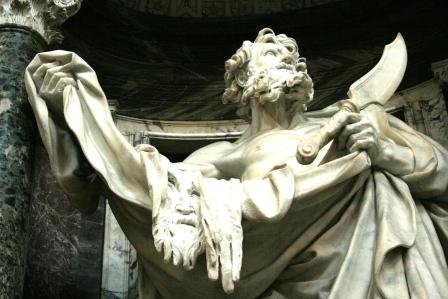
Removal of the skin is so excruciating that victims invariably passed out multiple times during the torture. To prevent this, they were usually hung upside down so the excess blood flow to their brains forced them to remain conscious. The skin is not easy to remove, and torturers rarely made an effort to remove it in one piece unless they wanted a trophy. Typically, the skin was sliced into strips, then each strip peeled from the body with the aid of a knife. Often, the skin was thrown into a fire or to animals, or dangled before the victim’s eyes.
This is how Bartholomew, one of the 12 apostles, was killed by locals in Armenia, into whose language he translated Matthew’s Gospel. The Armenians refused to abandon their idols and executed Bartholomew by crucifying him upside down and skinning him.
7Sewn Into Skins And Eaten By Dogs
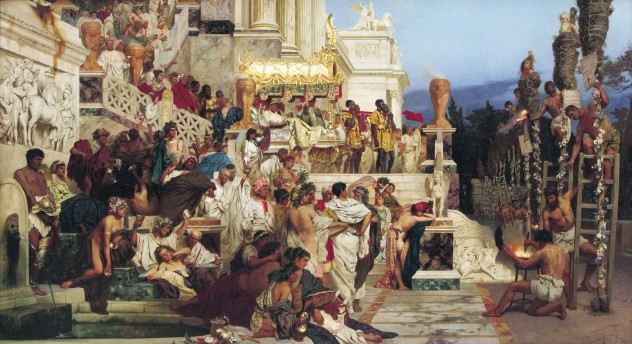
This torture was devised by Nero himself, not merely to cause Christians pain but to entertain him and his guests. Nero was infamously rumored to have crucified Christians on trees in his gardens, coated them with wax, and set them on fire to light his nightly walks (he evidently didn’t mind the stench). Others he ordered sewn into hides—any large animal was skinned, and the prepared skin sewn around the victim except for the head, hands, and feet. Then ravenous dogs were set loose. The victim could only scuttle around on all fours like a crab. Nero was said to have laughed heartily as the dogs gnawed at the skin as they would a bone.
Julian of Antioch was tortured every day for an entire year and displayed to the crowds in every town in Cilicia, (a southern coastal region of what is now Turkey). He was then sewn into a skin filled with asps and scorpions and flung into the Aegean Sea. He was said to have floated all the way across the Mediterranean to Alexandria, Egypt.
6Starved To Death
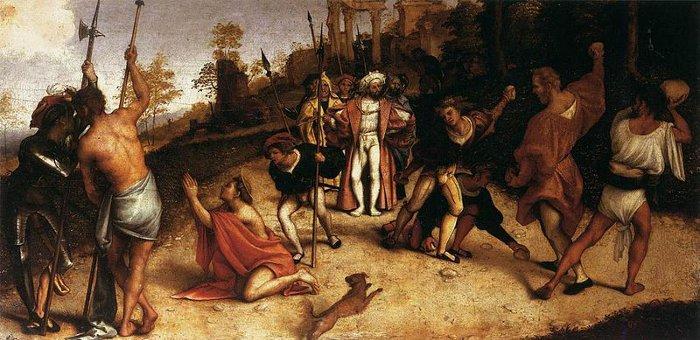
Emperor Decius ruled from 249 to 251, when he was killed at the Battle of Abrittus in Bulgaria. During his short reign, he had a temple built in Ephesus and required that all Christians sacrifice for the good of the emperor (not “to” the emperor, since this would impute divinity to Decius, who was still alive). This was against Roman law, but the Christians largely considered any similar sacrifice counter to their faith and refused, even when warned that they would be tortured to death. Pope Fabian himself was beheaded over the issue.
The next year, seven of Decius’s best soldiers, Constantinus, Dionysius, Malchus, Martianus, Maximianus, Joannes, and Seraion, were discovered to be Christian converts. Decius attempted to bribe them back to the Roman faith by giving them a long furlough while he was away. They fled the area and hid in a cave. Upon Decius’s return, he was told of their whereabouts and had the cave sealed. All seven died from starvation or dehydration. There is a legend, similar to Rip van Winkle, that these seven men fell asleep and woke up 360 years later, exited the cave and amazed the people in the town.
5Boiled To Death
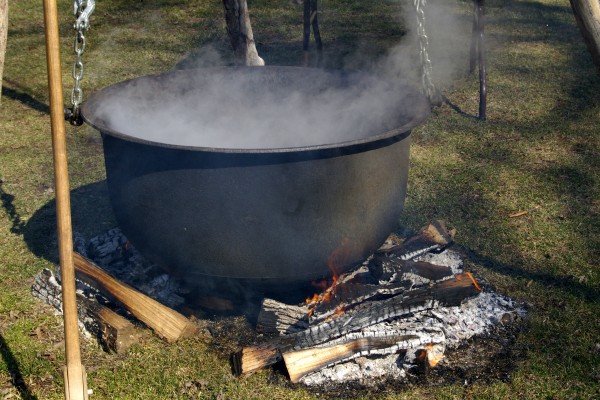
Boiling water causes almost instant first-degree burns and will cause third-degree burns after 10 minutes. Eventually, the flesh will slough away deep into the muscle, and death is usually marked by the water turning red as it finally breaches the blood vessels. Tradition holds that John the Apostle, who wrote the Gospel of John, survived without harm after being boiled in a cauldron of oil, after which he was exiled to Patmos Island in the Aegean.
In 222, a woman named Cecilia, possibly Saint Cecilia, was boiled in a bathtub over a bed of coals for a day and a half, after she converted her husband and brother. They were beheaded, as was the captain who led them to their deaths, because he converted in view of the victims’ fearlessness. After Cecilia was drawn alive from the tub, she is said to have sung a song of praise to God, which is why she is the patron saint of music. She was then beheaded. This inspired the Second Nun’s Tale in Chaucer’s Canterbury Tales.
4The Inquisition’s Auto Da Fe
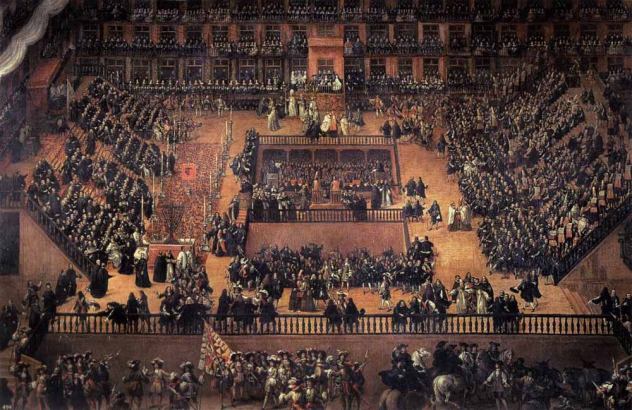
By the 13th century, everybody expected the Spanish Inquisition. The church formed inquisitions in every country in Western Europe, but the Spanish was the most brutal and feared. Anyone found guilty even of reading the Bible in his or her own language was tried, usually convicted, and often executed. The ceremony of execution and torture was called an “Auto da Fe,” or “Act of Faith.” The Inquisition was required not to spill any blood in performing tortures, but this requirement was usually ignored.
The most common method called for the victim to be stripped to his underwear and laid face-up on an elevated platform. Thin cords were passed through holes and wrapped around the limbs, then drawn so tightly that they cut through the victim’s flesh to the bones. If no confession was made, the process was repeated up to four times. If this elicited no confession, the next stage involved folding the arms backward behind the victim with the palms outward, then both arms were tied to a winch that ratcheted them closer and closer until the backs of the hands touched. This ripped both shoulders out of the sockets with such pressure that blood spewed from the mouth. A surgeon would then set the joints and the victim was given two months in prison to recover.
Two months later, the last torture involved a heavy chain lashed around the body with both ends attached to a winch. The arms were pinned straight at the sides and the chain was passed around the wrists. Then it was tightened like a tourniquet until the shoulders and wrists dislocated. The joints were then reset, and the torture immediately inflicted a second time. If the victim still did not confess, he was sent to be burned at the stake. If he did, he was placed in prison for another month or two, then released a cripple.
3Ground To Death In A Mill
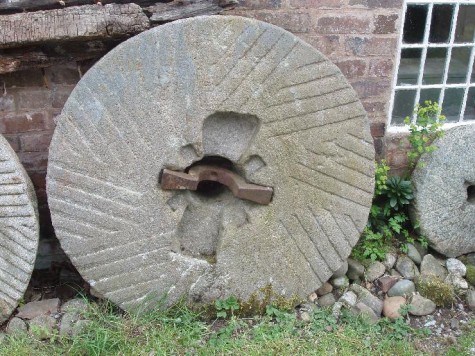
Under the rule of Maximian, Saint Victor Maurus may have suffered the most excruciating death of all. He secretly ministered to his parishioners in Milan until about 303, when he was discovered and immediately dragged through the streets behind a horse while the crowds stripped him naked and beat him, then demanded he recant. He refused and was stretched on the rack for a day, during which time he prayed to God for patience. He was then imprisoned—and immediately converted three of his guards. When Maximian heard of this, he ordered the guards beheaded, and Victor racked again, while the torturers beat him savagely with clubs. He was ordered to recant and refused a third time. Maximian had a Roman altar built and ordered Victor to sacrifice incense on it to Jupiter. This enraged Victor, who kicked over the altar. Maximian furiously ordered the offending foot cut off, after which Victor was flung into a stone mill used to grind wheat into flour, and the torturers ground him to death.
2Broken On The Wheel
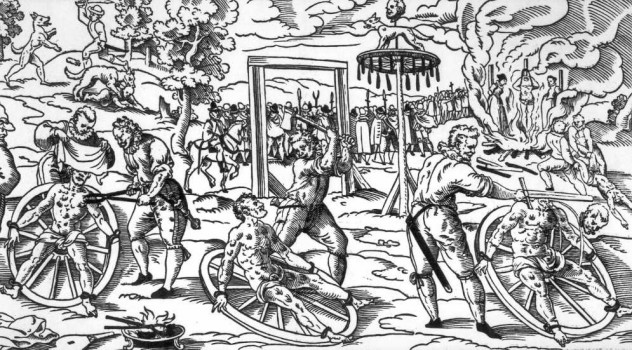
The breaking wheel is a horribly painful method of torture in which the victim was tied to the side of a wheel laid flat on the ground. Then one of two methods was employed: Either the torturer used a sledgehammer to smash every limb to pulp, or the wheel was made to turn in transection with another, like gears, so that the victim’s body was crushed between them. No bone or section of bone was spared, except the torso and head to keep the victim alive. Sometimes the genitals were smashed. Then the victim was left in this condition to die from exposure, blood loss, or to be eaten by birds and ants.
This was the fate of a man called Peter, in Lampsacus, Mysia (now Lapseki in Turkey), in about 250. He was martyred along with three others: Paul, Andrew, and Dionisia. Dionisia was condemned to be raped to death, but tradition holds that an angel spared her and the three nominated rapists ran away in fear. She then escaped prison, but desired to be martyred like her friends and allowed the authorities to recapture her. She was beheaded, and Paul and Andrew were stoned. Peter was broken on the wheel, then beheaded.
1Having Their Guts Eaten By Pigs

In 363, under Julian the Apostate, Saint Marcus was Bishop of Arethusa, a town near modern Apameia, Syria. Julian ordered Marcus to repair a dilapidated pagan temple, but Marcus destroyed it instead, then fled the city. He soon realized that his Christian followers would pay for what he had done if he did not return—and so he did. The enraged townspeople dragged him through the streets, stripped him naked, stabbed him all over his body with their pencils and quills, then smeared him with honey and suspended him in a basket in a town square, where the wasps and bees would swarm into the basket and devour him.
Several of his followers were discovered and dragged down by the mob, who ripped their bellies open with their bare hands. Corn was packed into their abdomens and pigs were set on them. The pigs devoured the corn—and their intestines.
FlameHorse is a writer for Listverse.








